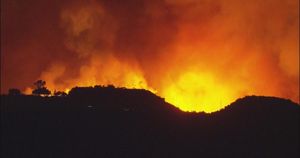At least 30 people have died and dozens more have been injured following crowd crushes at the Maha Kumbh Mela, one of the largest religious gatherings on earth, held at the confluence of the sacred Ganges and Yamuna rivers. The tragedy unfolded on January 29, 2025, during the festival’s most auspicious day, known as Mauni Amavasya, attracting millions of pilgrims from across India and beyond.
Authorities reported the grim toll as police stated at least 30 pilgrims were confirmed dead and over 60 injured, with many transported to nearby hospitals for treatment. The death toll is anticipated to increase as recovery efforts continue. Eyewitness accounts indicate the stampede occurred when devotees attempted to breach barricades set up for the procession of holy men, which led to chaos among the mass of over 100 million attendees.
“More bodies are coming in,” said one police source at the Moti Lal Nehru Medical College hospital, indicating the true number could be much higher than initially reported. Videos circulated online showed the distressing aftermath of the incident, with bodies being carried on stretchers and distraught families searching for missing loved ones.
Indian Prime Minister Narendra Modi expressed his condolences, referring to the loss of life as “extremely sad.” Eyewitnesses described harrowing scenes as people fell and were trampled underfoot. “I saw many people falling and getting walked on by the crowd... many children and women getting lost, crying for help,” recounted Ravin, a devotee who witnessed the deadly surge.
The Kumbh Mela, held every three years and considered the most pivotal among Hindu festivals, attracts followers who believe bathing at the confluence of the world’s holiest rivers absolves them of sins and brings salvation. This year, the festival has been particularly impactful due to the unprecedented turnout, with hopes for 400 million pilgrims over the six weeks of the event.
On the day of the tragedy, state officials indicated the stampede was triggered by overcrowding at the site, especially after barriers failed to withstand the onslaught of people eager to participate in the sacred bath. Akanksha Rana, the officer on special duty for the event, confirmed several injuries occurred after barricades were overwhelmed, leaving staunch opposition to crowd control measures.
Many pilgrims noted the police seemed overwhelmed and unprepared for the massive influx of people. “There was no chance for escape,” recounted Sarojini, who found herself trapped after the crowd began pushing toward the river. Eyewitness testimony indicated heavy-handed tactics from law enforcement to manage the situation, provoking anger from attendees who criticized both the police and event organizers for inadequate crowd management protocols.
Despite the tragedy, millions continued to arrive at the venue, with authorities urged by the state’s chief, Yogi Adityanath, to direct followers toward less crowded riverbanks. Video footage from the scene depicted scenes of chaos, with stressed officials struggling to manage the recently escalated throngs. Nevertheless, the stampede prompted several political leaders to voice their concerns, attributing the tragedy to “mismanagement” and the prioritization of VIP accessibility over the safety of ordinary attendees.
Former Congress Party leader Rahul Gandhi condemned the incident, arguing the government should have prioritized the safety of all devotees over the needs of dignitaries. With reports of vehicles restricted to ordinary pilgrims and special routes for high-profile guests, the elite treatment sparked public outrage and calls for reform.
The huge, sprawling tent cities erected for the festival, equipped with modern amenities to manage the throngs, have failed to prevent such tragedies from repeating. Attendees noted frustrations with overly engineered traffic patterns and restrictions, which have historically been associated with the Kumbh Mela’s organization.
Past festivals have seen similar incidents, with the last Maha Kumbh Mela held in 2013 also resulting in multiple fatalities during its closing ceremonies. The stampedes have drawn questions about whether the massive cultural event can be organized safely and effectively.
Many remain cautious after the January 29 incident, voicing concerns over their safety as they navigate the festival grounds. “We have children and elderly people with us,” said Nirmala Devi, noting her hesitation to return to the river. Despite the reported safety measures and increased security presence, the fear stemming from the tragic loss of life has cast a long shadow over the festival.
The comprehensive security apparatus deployed for this year's Maha Kumbh Mela included over 50,000 personnel, advanced surveillance technologies, and extensive planning efforts, underscoring the stress the local government is under to prevent any similar occurrences. Nonetheless, organizers are now faced with the pressing need to review these protocols, ensuring they prioritize the welfare of the millions of devotees who gather at the sacred event.
While the massive turnout is celebrated as a hallmark of faith, the recent tragedy has definitively raised eyebrows over safety practices at such large-scale religious events. With more pilgrims expected to attend throughout the sacred festival's duration, the pressing question remains: can the government provide the necessary safety alongside the reverence at such monumental events?



